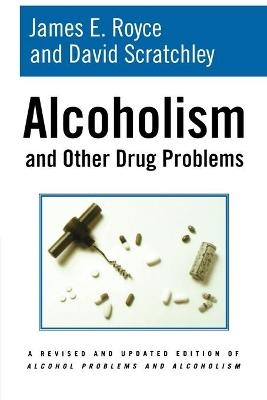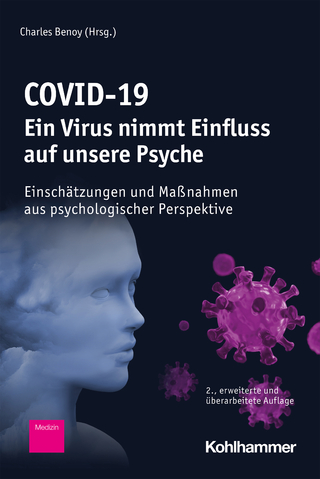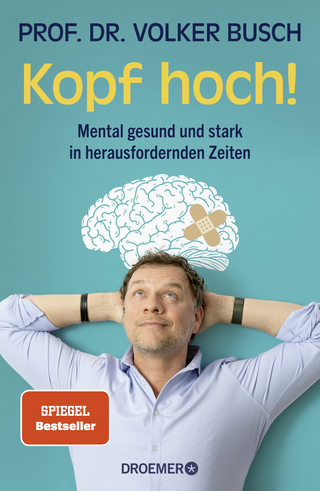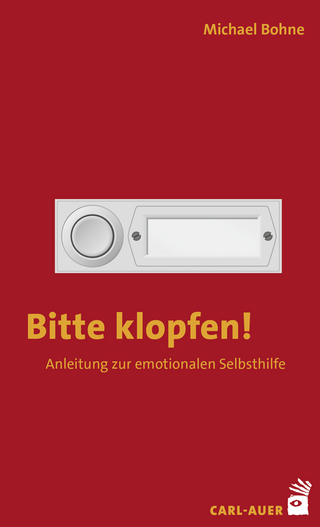
Alcoholism and Other Drug Problems
The Free Press (Verlag)
978-1-4165-6773-8 (ISBN)
Part I, "Alcohol and Other Drugs," examines the nature and impact of alcohol as a drug and discusses historical and contemporary cultural attitudes toward drinking in America. A new chapter on the effects that other drugs can have on the user and on the family, and treatment methods, has been added to this section. Part II, "Addiction," describes the patterns and symptoms of this complicated phenomenon. The authors also use new data to illustrate the impact that addiction can have on special groups such as children, minorities, and the elderly. Part III, "Prevention and Intervention," looks at the various techniques that have succeeded or failed in curbing drug abuse. Finally, Part IV, "Treatment and Rehabilitation," surveys the range of available treatment approaches with chapters on various twelve-step programs and new information on drugs and the law.
James E. Royce, S.J., Ph.D., is Professor Emeritus of Psychology and Addiction Studies at Seattle University. He is the author of Alcohol Problems and Alcoholism and coauthor of Ethics for Addiction Professionals.
Contents
Preface
Acknowledgments
PART ONE
ALCOHOL AND OTHER DRUGS
1. Alcohol and Alcohol Problems
Drinking, drunkenness, alcoholism. Alcohol as a drug. Defining alcoholism. Alcoholic versus problem drinker. Alcohol causes more problems than alcoholism: statistics, estimates, and methodology.
2. Drugs Other Than Alcohol
Comonly used prescription and illegal drugs. Opiates, stimulants, nicotine, marijuana, hallucinogens, sedative-hypnotics, inhalants.
3. Sociocultural Aspects
Alcohol in various cultures. Alcohol in America. Prohibition.
4. Alcohol: Physiology and Pharmacology
A. What the body does with alcohol. Ingestion, absorption, excretion, metabolism.
B. What alcohol does to behavior. Stimulant or depressant? Tolerance. Polydrug, synergism. Effects of blood levels. How many drinks?
C. What alcohol does to the body. Short- and long-term effects on health. Action of alcohol on each major organ and system. Fetal alcohol effects.
5. Other Drugs: Physiology and Pharmacology
Drug interactions. Effects on behavior. Effects on health.
PART TWO
ADDICTION
6. Patterns and Symptoms
Types of alcoholics. Common characteristics. Symptoms. Progression.
7. Causality of Addiction
Sociocultural, psychological, physiological causes. Role of heredity as part-cause. Learning (habit).
8. Addiction as a Disease
Is there an alcoholic personality? Pros and cons of calling addiction a disease. Implications for prevention, treatment, counseling, rehabilitation. Can alcoholics be conditioned to drink socially?
9. The Spouse and Family of the Addict
Cause or reaction? Adjustment of the family to the crisis of alcoholism. Reversal of roles. Effects of other drugs on the family.
10. Children of Dysfunctional Families
Typical roles: Hero (Responsible One), Scapegoat (Acting Out), Adjuster (Lost Child), Placater (Mascot). Adult Children of Alcoholics (ACoA): a high-risk group.
11. Special Groups
Women. Youth. The elderly. Minority races. The military. Skid road. Professionals, dual diagnosed, other groups.
PART THREE
PREVENTION AND INTERVENTION
12. Prevention
Primary, secondary, tertiary prevention. Information versus attitudes and values. Decision-making skills.
13. Eap -- Occupational Programs
Alcohol and other drugs in business and industry. Policy versus program. Roles of labor and management. Training of supervisors.
14. Referral and Intervention
Diagnosis. Counseling into treatment. Knowing and using various facilities.
PART FOUR
TREATMENT AND REHABILITATION
15. Overview of Treatments
Continuum of care. Variety of therapies. Detoxification. Intensive treatment. Therapies for other drug addictions.
16. Rehabilitation
After intensive care: importance of long-term followup. Phases of recovery, relapses, the dry drunk.
17. Alcoholics Anonymous and Other Twelve-Step Groups
Development of AA philosophy. The Twelve Steps and Twelve Traditions. The three legacies. Twelve-Step groups for other addicts: NA, CA, and others.
18. Al-Anon and Alateen
The Twelve Steps as used by spouse and children of the alcoholic. Special traditions and problems.
19. Spiritual and Moral Aspects
Progression of addiction as a spiritual disease. Spiritual recovery. False guilt. Moralistic attitudes. Responsibility for drug-related behavior.
20. Drugs and the Law
Liability. Discrimination. Regulation of sale. Alcohol and traffic laws. The Uniform Act: drunk in public no longer a crime, legal responsibility not eliminated, problems of implementation.
21. The New Profession
Ethics: confidentiality, education, certification. The addiction professional. Dual role of AA member. Staff burnout.
Appendix: Sources for Literature on Alcoholism and Other Addictions
General Bibliography
Index
| Erscheint lt. Verlag | 25.6.2007 |
|---|---|
| Verlagsort | New York |
| Sprache | englisch |
| Maße | 152 x 229 mm |
| Gewicht | 488 g |
| Themenwelt | Sachbuch/Ratgeber ► Gesundheit / Leben / Psychologie ► Psychologie |
| Geisteswissenschaften ► Psychologie ► Sucht / Drogen | |
| ISBN-10 | 1-4165-6773-9 / 1416567739 |
| ISBN-13 | 978-1-4165-6773-8 / 9781416567738 |
| Zustand | Neuware |
| Haben Sie eine Frage zum Produkt? |
aus dem Bereich


